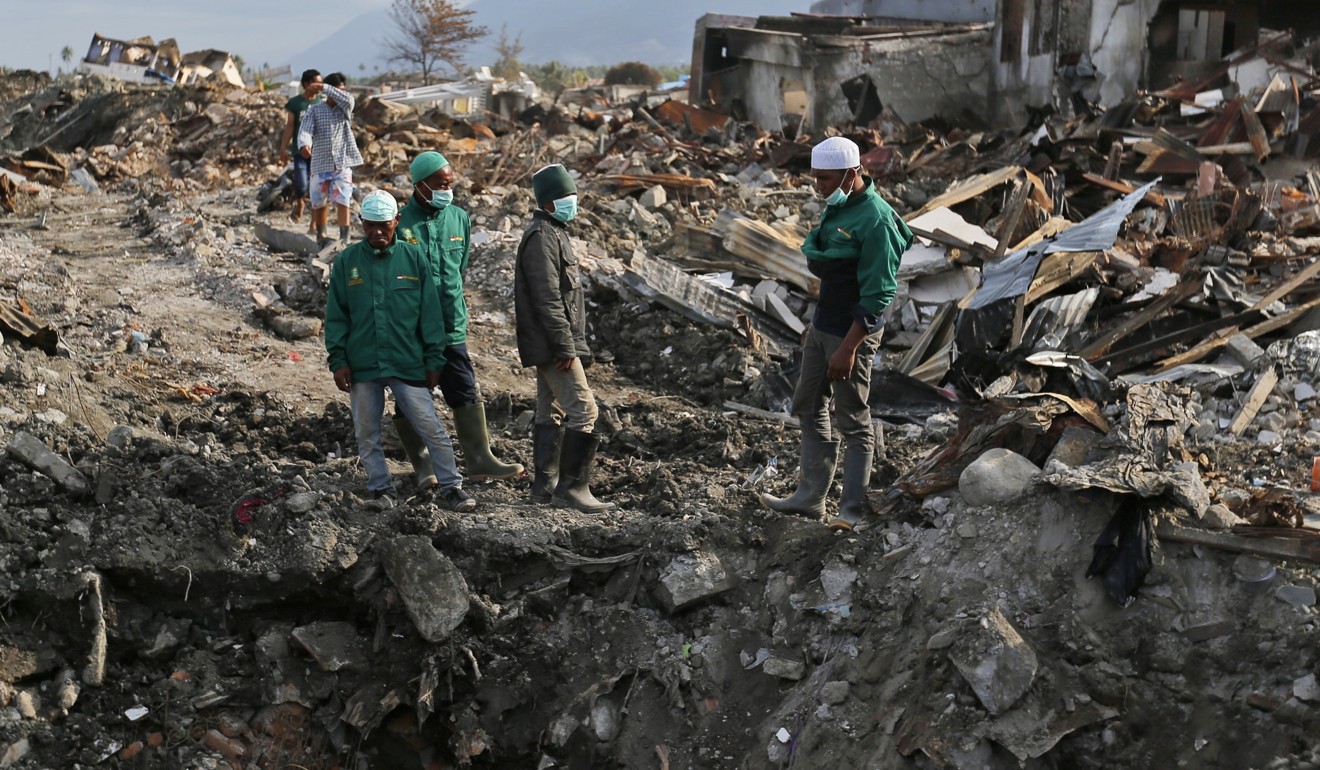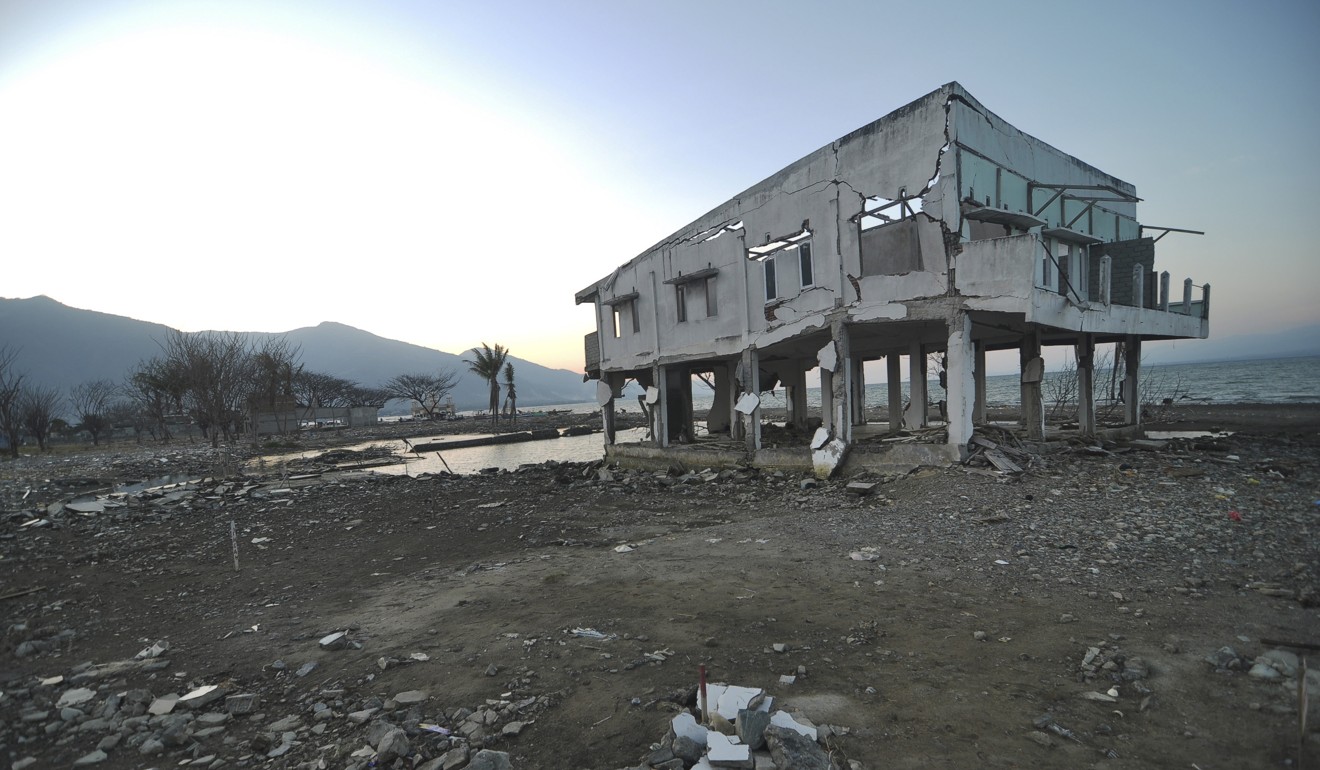
Indonesia marks one year since deadly quake-tsunami disaster that left thousands dead
- Mass prayers were held to remember victims of the 7.5 magnitude quake and subsequent deluge that razed swathes of Palu last year

Thousands attended a mass prayer in the devastated Indonesian city of Palu on Saturday, one year after a quake-tsunami swallowed up whole neighbourhoods and killed more than 4,000 people.
Many in the crowd sobbed as they remembered victims of the 7.5 magnitude quake and subsequent deluge that razed swathes of the coastal city on Sulawesi island last September.

Some 4,300 people were listed as dead or missing while nearly 60,000 people are still living in makeshift accommodation after their homes were destroyed, according to the Red Cross.
The force of the impact saw entire neighbourhoods levelled by liquefaction – a process where the ground starts behaving like a liquid and swallows up the earth like quicksand.
It also destroyed fishing boats, shops and irrigation systems, robbing locals of their income.

Rebuilding has been slow and many of the people still living in temporary shelters wonder if they’ll ever have a home again.
“I’ve been living in this tent since the quake struck,” said Ela, a mother of four.
“It’s been really hard. My kids got sick, it’s hot and sometimes we have to sleep on wet ground after it rains. The kids’ father is still working but we can’t afford to buy mattresses,” she added.
Nani, another mother of four kids, said her home was destroyed in the disaster.

“I don’t know if I’m going to get permanent housing,” she added.
Hundreds of damaged schools across the region have not been repaired.
Many “are so badly affected they remain too dangerous to use, forcing children to learn in temporary classrooms where they have to attend in shifts due to a lack of space”, Save the Children said Saturday.
Earlier the World Bank offered the country up to US$1 billion in loans to get the city back on its feet.
Indonesia is one of the most disaster-prone nations on Earth due to its position straddling the so-called Pacific Ring of Fire, where tectonic plates collide.
The Southeast Asian archipelago is also dotted with more than 100 volcanoes, including one that erupted between Java and Sumatra in late 2018 and unleashed a tsunami that killed more than 400 people.
On Boxing Day 2004, a 9.1-magnitude earthquake struck off the coast of Sumatra and triggered a tsunami that killed 220,000 across the Indian Ocean region, including around 170,000 in Indonesia.